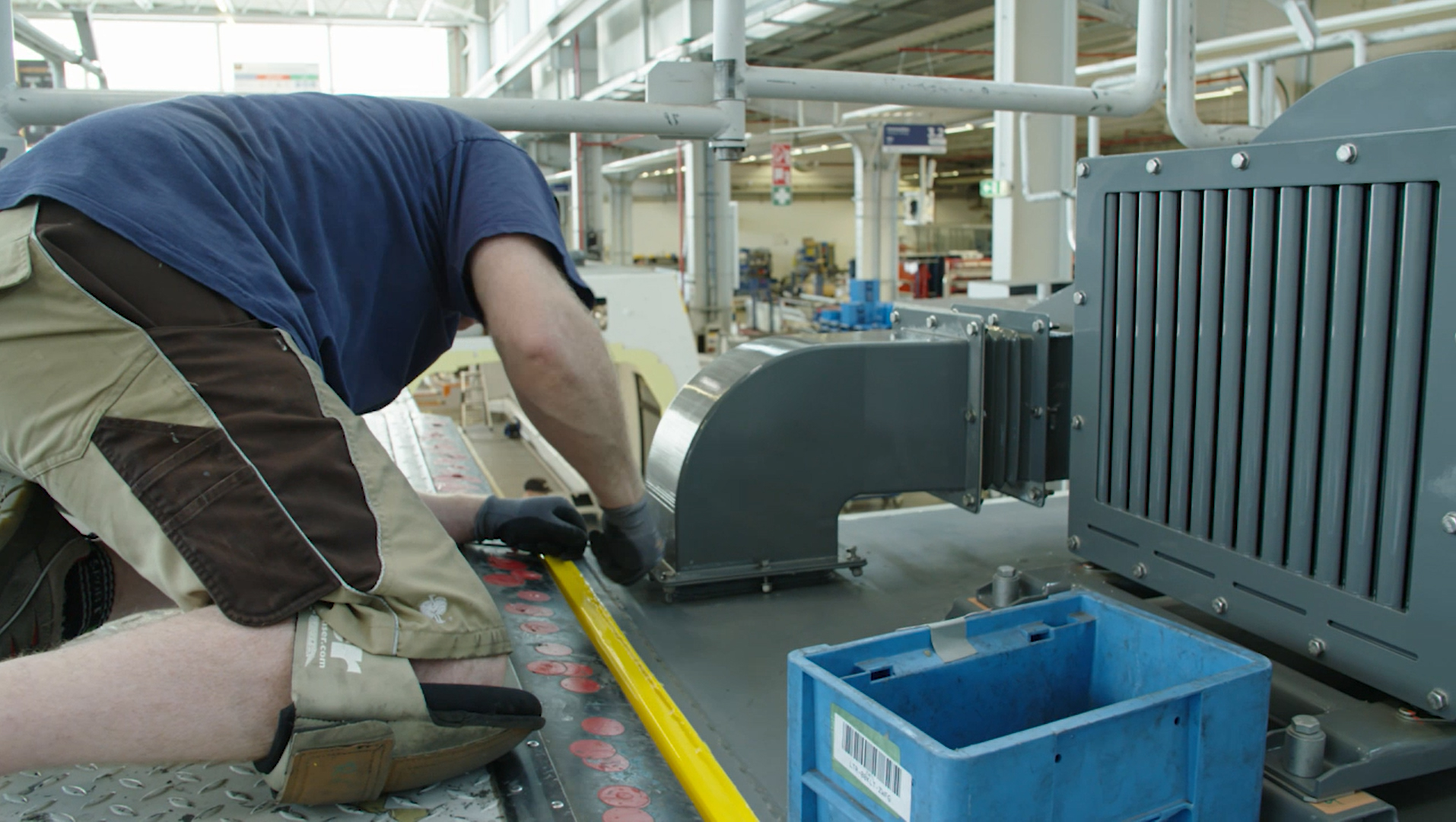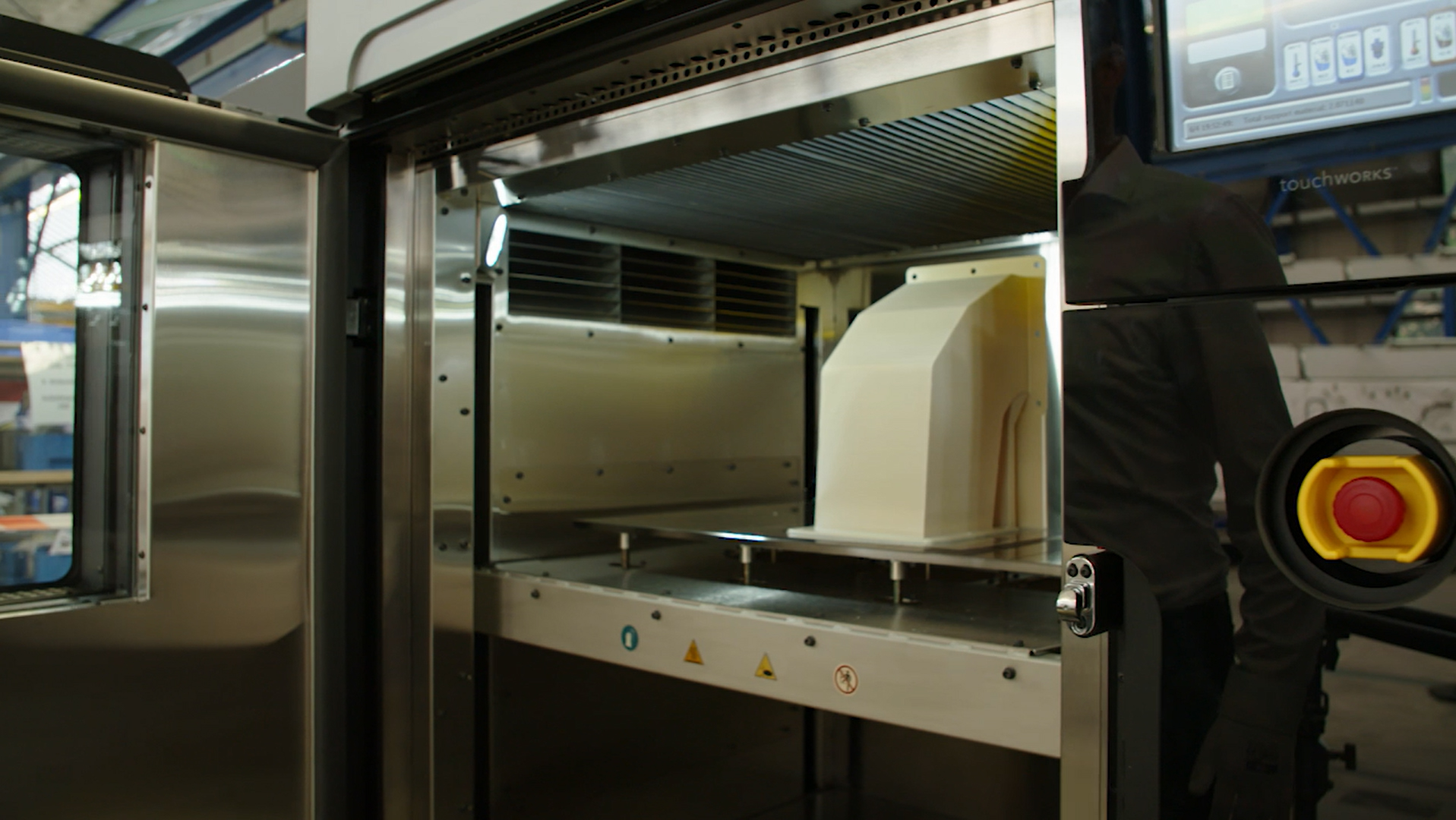At Formnext 2019, leading 3D printer OEM Stratasys made two major announcements regarding its continued endeavor to integrate 3D printing within the railway industry.
The company has created a “Rail Industry Solution” package designed to help the maintenance of passenger trains using 3D printing. Included in the solution are materials that have passed the European Union‘s Rail Standard, EN 45545-2, alongside a Stratasys Fortus 3D printer. This will help railway firms to 3D print spare parts on-demand that meet certification requirements for smoke, fire, and toxicity.
Furthermore, Stratasys revealed that a new railway industry client, Bombardier Transportation, is using the Stratasys Rail Industry Solution to accelerate the development process of its trains. Bombardier joins Angel Trains, Chiltern Railways, DB ESG and Siemens Mobility in utilizing the Rail Industry Solution to 3D print customized spare interior and exterior train parts.
“In industry after industry, we continue to see organizations discover how additive manufacturing improves customer service, streamlines maintenance and operating costs, and helps engineer lighter, durable products,” comments Andreas Langfeld, Stratasys EMEA President. “Rail is no exception.”
“The old model of keeping trains running through expensive physical inventory or slow and costly traditional manufacturing is being replaced by digital inventory and on-demand 3D printing. Indeed, this is exemplified by some of the biggest names in European passenger rail.”

3D printing certified spare parts for the railway industry
Blueprint, Stratasys’ additive manufacturing consultancy, estimates that a train part in need of replacement, which costs less than €100, can often set back a single major U.S. commuter rail service €18,000 for every day that the part keeps a train out of service. The service life of trains typically ranges between 35-45 years. Train operators are therefore presented with several challenges when it comes to vehicle maintenance and replacement for older train parts, which can be difficult to source.
Using 3D printing, train operators can acquire the parts within a short time frame, regardless of the uniqueness of the part or the age of the train car. This minimizes the time and cost attributed to trains that would usually be kept out of service until a spare part can be sourced. The maintenance of the trains and the quality of service for passengers are consequently improved.
As such, Stratasys has made a significant effort to help the railway industry improve the maintenance of its trains using 3D printing. Recently, in September 2019, it was revealed that the company was trialing 3D printed parts on board a Chiltern Railways train in the UK, as part of an ongoing collaboration with British rolling stock operating company (ROSCO) Angel Trains, and Derby-based engineering consultancy DB ESG. It was reportedly the first-ever 3D printed components deployed within an in-service passenger train in the country and comprised four armrests and seven grab handles. The company has also installed its Fortus 450mc Production 3D printer at Siemens Mobility’s digital rail maintenance center.

Stratasys’s newly established Rail Industry Solution is intended to help its 3D printing technology meet the requirements for passenger trains and light rail. This, in turn, will help provide a better position for the railway industry to leverage additive manufacturing for the production of spare parts, and subsequently increase its adoption. Included in the Rail Industry Solution are the ULTEM 9085 resin and Antero 800NA thermoplastic. Both have passed the European standard EN 45545-2 for all three Hazard Levels and are therefore rail qualified.
The ULTEM 9085 resin is a flame-retardant, high-performance material often employed in high-performance applications. Earlier in 2019, Stratasys classified the ULTEM 9085 resin in order to promote its use in 3D printing interior components for aircraft. Antero 800NA, on the other hand, is a PEKK-based thermoplastic with favourable mechanical properties such as high strength, high heat resistance, toughness and wear resistance. Both materials are compatible with Stratasys’ Fortus series of 3D printers.

Accelerating the production process for train parts
Bombardier Transportation is the rail equipment division of multinational firm Bombardier, an aerospace and railway manufacturer. A new addition to Stratasys’ railway industry case studies, the company is using the F900 FDM 3D printer to accelerate part production for interior and exterior vehicle components, specifically for its trains in German-speaking countries.
The 3D printer has been installed at Bombardier Transportation’s Hennigsdorf-based facility in Berlin. According to Marco Michel, Vice President Operations at Bombardier Transportation, the F900 has allowed the company to produce customized spare parts on-demand via digital inventory at a lower cost.
“Our goal during the development process for new trains is to speed up the production of project-specific parts that take a while to design,” comments André Bialoscek, Head of Vehicle Physical Integration, Bombardier Transportation Hennigsdorf. “While accelerating production, we still need to ensure that total functionality, safety and repeatability are upheld. With our F900 3D Printer, we are able to do all those things – it has been a game-changer for our department. The knowledge gained in this way will then be passed on to our suppliers in case of series production.”
Bialoscek’s department recently leveraged the F900 3D printer to manufacture a complex customized air vent system for a battery-powered prototype train. 3D printing allowed the team to reduce the time it would have taken to produce the part had they sourced it externally, reportedly from four months to around four weeks. “That’s a resulting timesaving of nearly 77 percent,” explains Bialoscek.
It was 3D printed using the ULTEM 9085 resin, which therefore met the railway certification guidelines for smoke, toxicity, and fire. The material is also lightweight, allowing Bombardier Transportation to optimize the weight of the final interior train component. “That is an incredible outcome for our department and demonstrates our ability to now produce certain parts on-demand to our exacting needs without enduring lengthy production times or compromising on material quality. Also, parts can now be replaced much quicker in the servicing of older trains,” adds Bialoscek.

Bombardier Transportation is building a digital inventory for producing spare parts on-demand using the Stratasys F900 3D printer. The company is, therefore, able to save physical storage space by storing 3D scans of its parts, thereby creating a ‘digital warehouse’, an initiative being employed elsewhere within the railway industry. Furthermore, the company is also utilizing Stratasys’ PolyJet 3D printing technology for prototyping and design validation.
Subscribe to the 3D Printing Industry newsletter for the latest news in additive manufacturing. You can also stay connected by following us on Twitter and liking us on Facebook.
Looking for a career in additive manufacturing? Visit 3D Printing Jobs for a selection of roles in the industry.
Featured image shows The Siemens Mobility RRX Rail Service Center , which utilizes Stratasys’ Rail Industry Solution at the heart of its servicing operation. Photo via Stratasys.


